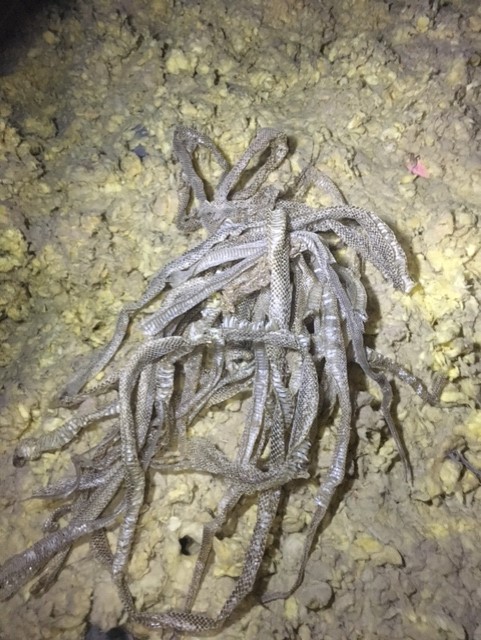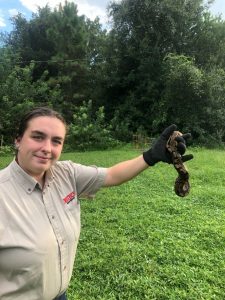Although many of us are off-put by them, snakes are not the most noticeable creatures. They tend to hide and make little noise, so you might not see them in your house even if you have a full-fledged infestation. But even if you don’t see them directly, they do leave certain signs–namely, poop, skins, and tracks. It is important, therefore, to be able to identify the signs of a snake infestation to begin to take steps to remove them.
Snake Droppings
According to Reptile Guide, snakes will only poop as often as they eat, which might be once every few days to once every few weeks, depending on variables like temperature and the size of the snake. If you find snake droppings inside, there’s a good chance a snake is in your home. Do not touch the snake poop! The feces can carry diseases that are transmittable. Wear proper PPE before attempting to clean up snake poop.
Snake vs Rodent vs Bird Droppings
It can be difficult to differentiate between these three, especially because they often occur in the same areas.
Like bird feces, snake feces is oblong in shape and also quite wet.
Snake and rat poop are both oblong in shape. Snake poop tends to have pointed tips and is partially white. Rodent poop has no white parts.
Sometimes scales or hair can be visible in snake feces, as snakes swallow their prey whole–even the indigestible stuff.

Snake Skin

Snakes shed skin about once a month; older snakes do so a bit less. If you’re seeing snake skins in your house, then, it’s probable that the sake in question wasn’t merely passing through.
Snake Tracks
Their appearance is reminiscent of the track a rubber hose would leave typically about ½ an inch wide or more, in the form of wavy or straight lines. This sign can be harder to spot. You’ll typically find a track through dust or dirt.
Why is There a Snake in My House?
It could be that a single snake simply wandered into your house to seek refuge from the elements–not unlikely, as snakes are cold-blooded and very sensitive to temperature changes. Your home has the ideal conditions for a snake — temperate with many dark places.
Another more concerning possibility is you have a rodent infestation. Snakes primarily prey on rodents. A rodent infestation could lure a snake into your home.
Professional Snake Control
If you suspect a snake in the house, the best course of action would be to call a professional, as they will have the proper tools and knowledge to take care of the infestation(s) in an expeditious and ethical manner. At Trutech Wildlife Removal, we also look for signs of rats and mice during the free snake inspection



